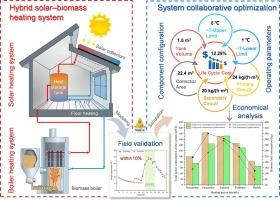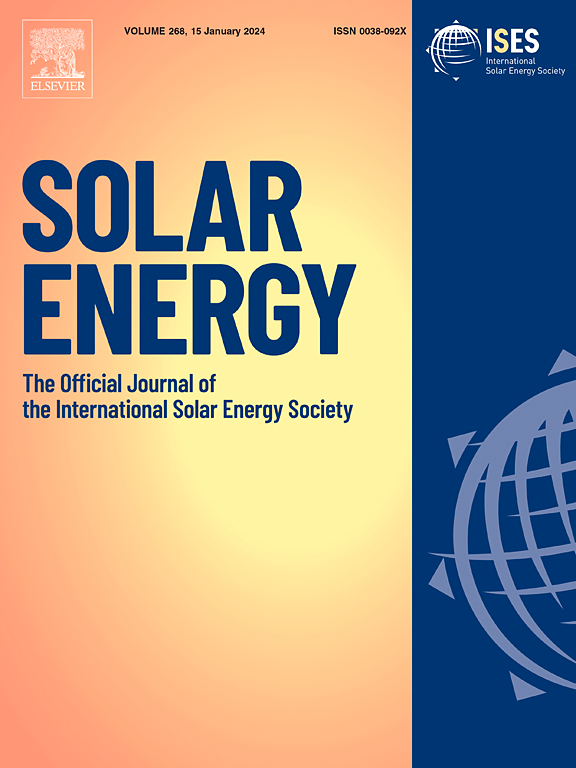Optimal study of a hybrid solar-biomass heating system for rural household in cold regions of China
IF 6
2区 工程技术
Q2 ENERGY & FUELS
引用次数: 0
Abstract
Background
Currently, the heating measures for rural households face significant disadvantages such as reliance on fossil fuels, poor thermal comfort, and high carbon emissions.
Objectives
This study designed a solar-coupled domestic biomass boiler parallel heating system (SBPHS) with collaborative optimization.
Methods
The SBPHS was developed based on a typical rural residence in cold regions. Subsequently, a parametric analysis was performed on both component configuration and operating parameters. Furthermore, we determined optimal configurations of the SBPHS using the life cycle cost (LCC) as the optimization objective. Solar fraction, total power consumption, effective heat collection and boiler runtime were used as performance indicators to evaluate the system.
Results
Simulation results were in good agreement with measured data. Parametric analyses indicated that component design should consider energy performance and economics, especially in rural areas. As a start/stop signal for the collector system, the collector-tank temperature difference significantly affected effective heat collection and system energy consumption. Further, flow rates had significant impacts on all performance indicators, especially collector flow rate. Considering the optimum operating conditions throughout the system’s life cycle, Hooke-Jeeves algorithm was adopted to optimize component configurations and operating parameters simultaneously. Post-optimization, LCC of the SBPHS was reduced by 12.3 %. The optimized system could achieve a solar energy share of up to 62.7 %, total energy consumption reduction of 13.6 %, and biomass fuel consumption reduction of 26.3 %, indicating significant energy savings.
Conclusion
These findings enhance the feasibility of implementing the SBPHS in rural residences in cold areas and provide theoretical foundation for the design and operation of system.

中国寒冷地区农村家庭太阳能-生物质混合供暖系统的优化研究
背景目前,农村家庭的供暖措施面临着依赖化石燃料、热舒适度差、碳排放量高等显著弊端。方法根据寒冷地区典型的农村住宅开发了太阳能耦合家用生物质锅炉并联供暖系统(SBPHS)。随后,对组件配置和运行参数进行了参数分析。此外,我们还以生命周期成本(LCC)为优化目标,确定了 SBPHS 的最佳配置。结果 模拟结果与测量数据非常吻合。参数分析表明,组件设计应考虑能源性能和经济性,尤其是在农村地区。作为集热器系统的启动/停止信号,集热器-水箱温差对有效集热和系统能耗有显著影响。此外,流量对所有性能指标都有重大影响,尤其是集热器流量。考虑到整个系统生命周期内的最佳运行条件,我们采用了胡克-杰维斯算法来同时优化组件配置和运行参数。优化后,SBPHS 的 LCC 降低了 12.3%。优化后的系统太阳能占比高达 62.7%,总能耗降低 13.6%,生物质燃料消耗降低 26.3%,节能效果显著。
本文章由计算机程序翻译,如有差异,请以英文原文为准。
求助全文
约1分钟内获得全文
求助全文
来源期刊

Solar Energy
工程技术-能源与燃料
CiteScore
13.90
自引率
9.00%
发文量
0
审稿时长
47 days
期刊介绍:
Solar Energy welcomes manuscripts presenting information not previously published in journals on any aspect of solar energy research, development, application, measurement or policy. The term "solar energy" in this context includes the indirect uses such as wind energy and biomass
 求助内容:
求助内容: 应助结果提醒方式:
应助结果提醒方式:


